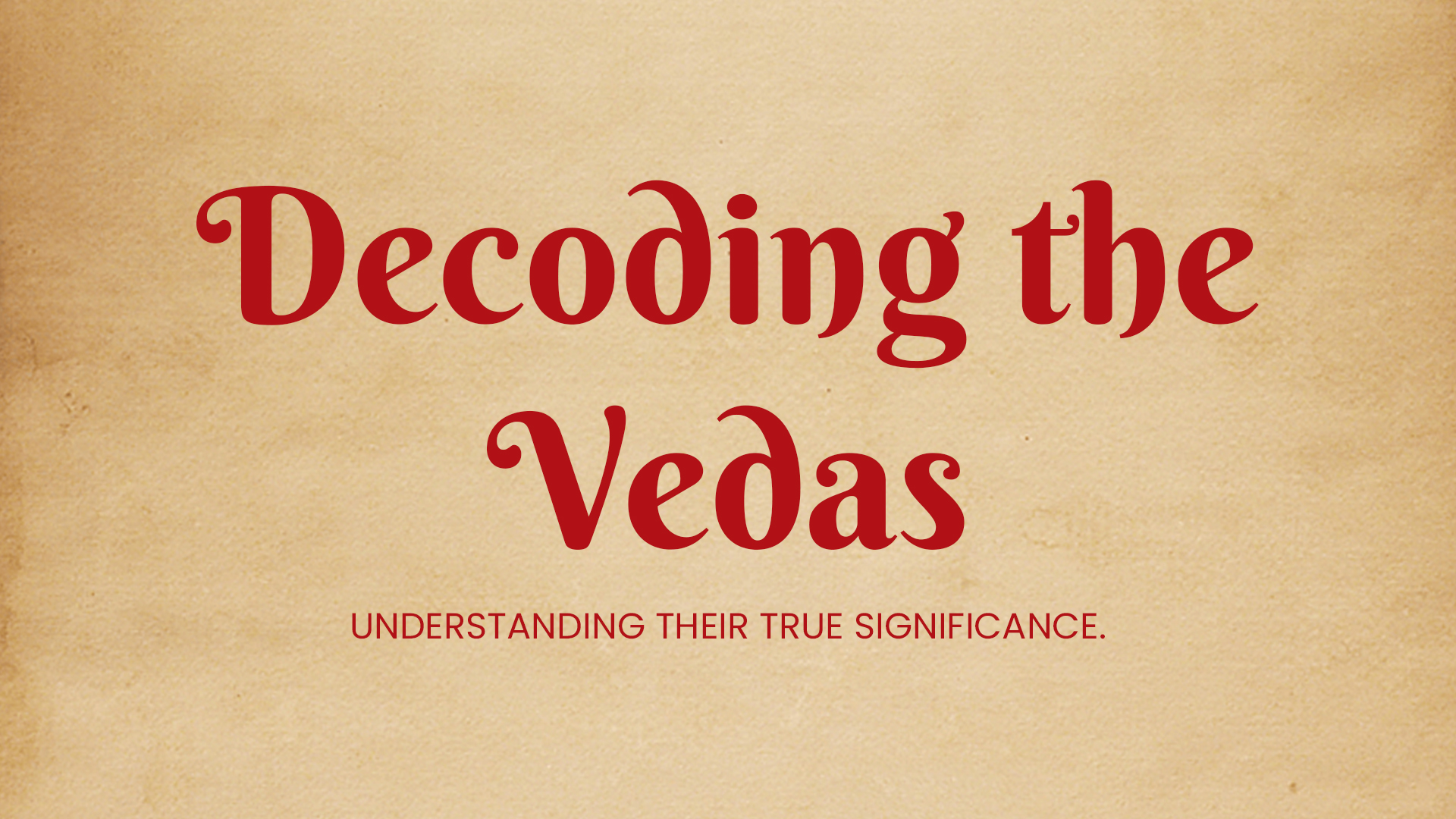Namaskar
There is a Subhashit in Subhashit Manjusha (सुभाषित मंजूषा):
आहारनिद्राभयमैथुनम् च सामान्य मेतत् पशुभिर्नराणाम् ।
ज्ञानं हि तेषाम् अधिको विशेषो ज्ञानेन हीनाः पशुभिः समानाः ॥
– सुभाषित मंजूषा
‘Aahar’ signifies the act of consuming or storing food, ‘Nindra’ refers to rest, ‘Bhay’ signifies fear, and ‘Maithun’ refers to the act of mating(sex) or procreation. These four aspects exist in both animals and humans. Knowledge is the distinguishing factor that exists solely in humans. Without knowledge, humans are no more than animals.
Now, what does the word “knowledge” refer to? The scriptures say that it is the knowledge of what types of Karmas we have to do and also how we should perform our Karmas to attain success. So basically it’s knowledgeable about what to do and how to do it.
In the scriptures, all our actions or Karmas are categorized into four types known as the Purushartha Chatushtaya(पुरुषार्थ चतुष्टय). They are – Dharma, Artha, Kama, and Moksha. When you examine any of your actions, it will fall into one of these four categories only.
Dharma – refers to religious or duty-based activities.
Artha – refers to occupational or professional activities.
Kama – refers to pleasure-oriented activities.
Moksha – refers to spiritual or liberation-based activities.
So, a book or a text that guides us on how to conduct ourselves in these four pursuits in order to achieve success, happiness, and peace in our actions is called the Vedas.
Let’s take a look at a verse from Aryavidya Sudhakar:
वेदो नाम वेद्यन्ते ज्ञाप्यन्ते धर्मार्थकाममोक्षा अनेनेति व्युत्पत्या चतुर्वर्गसाधनभूतो ग्रन्थविशेषः ॥
– आर्यविद्या सुधाकर
The Vedas are called so because they contain knowledge and provide guidance on the four pursuits – Dharma, Artha, Kama, and Moksha. With this origin, they are a special scripture that serves as a means for attaining these four objectives.
– Aryavidya Sudhakar
In other words, the specific scripture that serves as a necessary means for acquiring accurate knowledge about the four pursuits of life – Dharma, Artha, Kama, and Moksha, is called the Vedas.
If we examine the word ‘Veda’, this understanding becomes clear. In the scriptures, the origin of the word ‘Veda’ is said to be derived from the root verb ‘vid’, and based on that, it has been given four meanings.
The first meaning is:
विद् – ज्ञाने ।
‘Vid’ – knowledge.
This scripture provides knowledge on how to achieve success in our four pursuits.
The second meaning of Vedas is:
विद् – सत्तायाम् ।
‘Vid’ – eternal.
The scripture is called Vedas because it is timeless. The scriptures provide an explanation of truth:
त्रिकाले अपि तिष्ठति इति सत् ।
It exists in all three time periods – past, present, and future.
The scripture that exists in all three time periods – that which was in the past, is currently in the present and will continue to be relevant in the future, is called the Vedas.
The third meaning of Vedas is:
विद् – विचारे ।
‘Vid’ – contemplation.
The scripture that compels us to engage in contemplation provides an opportunity to discover truth, and is capable of providing new and innovative ideas is called the Vedas.
The fourth meaning of Vedas is:
विद् – लाभे ।
‘Vid’ – acquisition.
The scripture that is capable of helping us attain the desired object or goal is called the Vedas.
In the book “Siddhanta Kaumudī”, a verse is given which explains this.
सत्तायां विधते ज्ञाने वेत्ति विन्ते विचारणे ।
विन्दते विन्दति प्राप्तौ श्यन्ळुक्ष्नम् शेष विदं क्रमात् ॥
– सिद्धांत कौमुदी
Through perseverance, one gains knowledge; through knowledge, one discerns; through discernment, one engages in contemplation; through contemplation, one achieves; thus, knowledge continues to accumulate, step by step.
-Siddhant Kaumudi
Whatever actions we are currently engaged in, whatever actions we have already performed, or whatever actions we will undertake in the future, their purpose is only twofold – the attainment of pleasure or the cessation of suffering. The scripture that guides us in this endeavor is the Vedas.
With this explanation from Sayanacharya, I shall conclude my article:
इष्ट प्राप्ति अनिष्ट परिहार योर् अलौकिकम् उपायम् यो
ग्रन्थो वेदयति स वेद: ।
– सायणाचार्य
In other words, Ishtha, or “desired,” refers to the attainment of what we want, i.e., desire fulfillment. And Anishta, or “undesired,” refers to the removal of what we do not want, i.e., the elimination of undesirable things or circumstances. The extraordinary means that scripture teaches us for achieving desire fulfillment and removing undesirable elements is called the Vedas.
Keep in mind that the means mentioned here are transcendental, meaning they cannot be understood by our limited intellect and senses alone. That is why the necessity for study and specialized understanding arises.
May we all attain the divine eye of knowledge through which we can comprehend the wisdom of the Vedas. With this prayer, I shall bring my article to a close.
Shubham Bhavatu.



Comments (3)
Sumana Majumder
July 21, 2023 at 7:25 amঈশ্বর আপনার মঙ্গল করুন । আপনার উদ্যোগ সফল হোক ……💐
Jaagruti Shastri
July 21, 2023 at 1:54 pmHindi me bhi ho shakta hai ?
Om
July 25, 2023 at 3:20 amNamaskar 🙏
Aap Hindi me bhi likhe taki Bahut log jo ki English me nhi padh sakte vo bhi Vedic Gyan na labh prapt kar sake